FMC to Investigate Alleged Discriminatory Canadian BWMS Regulations
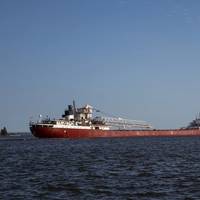
The U.S. Federal Maritime Commission (FMC) said it will initiate an investigation into whether ballast water regulations proposed by the Government of Canada discriminate against U.S. flag vessel operators in the Great Lakes and St. Lawrence River.The FMC commissioners voted unanimously to accept a petition filed by trade group the Lake Carriers’ Association (LCA) asking the commision to perform the investigation and examine the detriment and harm to the U.S. flag fleet resulting…
Winter Work on the Great Lakes
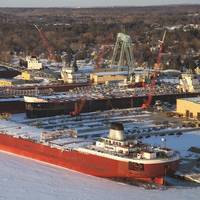
Along the 1,600-mile, ice gray arch of the St Lawrence Seaway, the 2020 Great Lakes commercial shipping season will lurch back to life on March 25 when the Soo Locks at Sault Ste. Marie, Mich. reopen.The ceremonial opening signals a passage with passable ice and the 114th Great Lakes season for its fleet of 45 venerable lakers. Most of these huge self-loading freight haulers are at least 50 years old, rust free, and fit; American steel sailing on a freshwater sea.To handle Great Lakes cargo…
More than $97 Mln in Maintenance Planned for US-flag Lakers

U.S.-flag lakers idled for the winter season will undergo more than $97 million in maintenance and modernization work at multiple Great Lakes shipyards before returning to service in March. The $97 million figure is an increase from $70 million in 2019, according to the Lake Carriers' Association (LCA).After working around the clock for 10 months hauling cargo over more than 70,000 miles per vessel, the ships and their crews are given a brief rest to recoup before the Soo Locks reopen and the next season starts in March…
US-flag Great Lakes Cargo Movement Steady in July

U.S.-flag Great Lakes freighters (lakers) moved 9.8 million tons of cargo in July, a virtual tie with a year ago, the Lake Carriers’ Association reported. The July float was, however, 6.4 percent below the month’s five-year average.Iron ore cargos for steel production totaled 5.2 million tons, an increase of 5 percent. The July ore float was also the highest monthly total for U.S.-flag lakers since December 2014.Coal loads totaled 1.3 million tons, a decrease of nearly 11 percent.
Study: Nonnative Species Carried in Lakers' Ballast Water
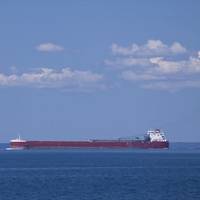
A recent study on nonindigenous species of plankton in ballast discharges from U.S. and Canadian lakers to western Lake Superior documented five species of nonindigenous zooplankton not yet established in western Lake Superior, including Hemimysis anomala (“bloody red shrimp”), in ballast water discharged there. It also detected, in uptake water, a species of zooplankton (Paraleptastacus wilsoni) that had not previously been recorded in the Great Lakes.Some of the species, including this one, live in harbor sediment and may have escaped routine surveillance to date.
Algoma Purchases Four U.S. Flag 'Lakers'
Algoma Central Corporation, a provider of marine transportation services, today announced it has reached an agreement with American Steamship Company to acquire four vessels. The Company has acquired the M.V. Buffalo, the M.V. Adam E. Cornelius, the S.S. American Valor and the S.S. American Victory. The availability of these vessels presented an opportunity to expand Algoma’s vessel fleet and capacity at extremely attractive values. Both the M.V. Buffalo and the M.V. Adam E. Cornelius will provide efficient capacity to serve customers in the river-class segment of Algoma’s Domestic Dry Bulk market. Both ships will complement the Company’s existing fleet to ship salt, aggregates, and other commodities.
Great Lakes Shipping Season Kicks Off
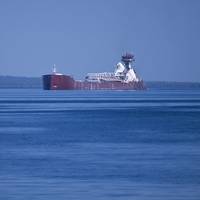
The 2017 Great Lakes shipping season begins today when the U.S.-flag tug/barge unit Dorothy Ann/Pathfinder departs her winter lay-up berth in Erie, Pa., and sails to Cleveland, Ohio, where she will initiate the shuttle of iron ore from Cleveland Bulk Terminal to the ArcelorMittal steel mill at the end of the navigable portion of the Cuyahoga River on Wednesday. The vessel will load approximately 15,000 tons that was mined from Minnesota’s Mesabi Iron Range. The next vessel to get underway will be the cement carrier Bradshaw McKee/St. Marys Conquest on March 1.
Great Lakes-Seaway Shipping Rebounds in August
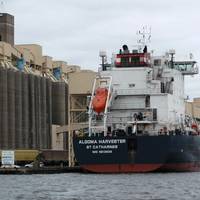
Great Lakes-St. Lawrence Seaway shipping rebounded in August due to a surge in U.S. grain exports, iron ore shipment improvements and a steady flow of raw materials for manufacturing and construction. “We’ve seen a real rally in August. St. Lawrence Seaway cargo shipments were up 8 percent compared to the same month last year,” said Stephen Brooks, President of the Chamber of Marine Commerce. “U.S. grain exports now match last season’s strong performance. Iron ore shipments have improved as Canadian and U.S.
US-flag Lakers Cargo Movements Up in April
U.S.-flag Great Lakes freighters (lakers) moved 7.3 million tons of cargo in April, an increase of 9.7 percent compared to a year ago and 7 percent above the month’s five-year average, according to the Lake Carriers’ Association (LCA). Iron ore cargos for the steel industry totaled 4.4 million tons, an increase of 30 percent compared to a year, LCA said. However, coal shipments to power plants and steel mills slipped to 1.2 million tons, a decrease of 11 percent. Limestone loads for construction projects and steel production totaled 1.4 million tons, a decrease of two or three boatloads. All five Great Lakes are currently above their long-term average for water waters, but full loads remain elusive, according to LCA.
Duluth-Superior Shipping Season Underway
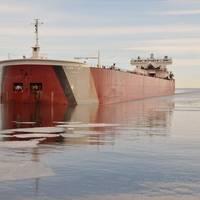
The first two U.S.-flag lakers are on schedule to depart the Port of Duluth-Superior Tuesday, March 22, signaling the start of the 2016 commercial shipping season at this, the farthest inland port on the Great Lakes St. Lawrence Seaway (GLSLS) system. Shortly after 7 a.m., the Edwin H. Gott, is scheduled to move from its winter berth at the Clure Public Marine Terminal – first to fuel, then to depart mid-morning beneath Duluth’s famed Aerial Bridge en route to the CN Dock in Two Harbors to load iron ore pellets. Shortly thereafter, another ship in the Great Lakes Fleet, the Philip R.
US-flag Lakers’ Cargo Down in October
U.S.-flag Great Lakes freighters (lakers) carried 9.7 million tons of cargo in October, a decrease of 13.7 percent compared to a year ago, and a decrease of 0.6 percent compared to the month’s long-term average, according to that Lake Carriers’ Association (LCA). Iron ore cargos decreased 21.8 percent compared to a year ago, coal cargos decreased 7 percent and limestone loadings dipped a little more than 1 percent. Year-to-date U.S.-flag cargos total 71.9 million tons, an increase of 0.9 percent compared to the same point in 2014, but a decrease of 1.3 percent compared to the long-term average for the January-October timeframe. Iron ore cargos have decreased 6.3 percent compared to a year ago, while coal shipments are up 6.5 percent and limestone loadings have increased 10 percent.
Lock Closure Causes Big Losses on the Great Lakes
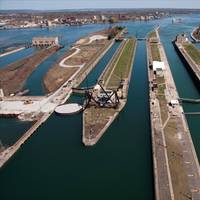
The 20-day closure of the MacArthur Lock at Sault Ste. Marie, Michigan cost U.S.-flag Great Lakes vessel operators nearly $250,000, according to the Lake Carriers’ Association (LCA). A misalignment of the miter gates forced the U.S. Army Corps of Engineers to close the lock on July 29, and it remained out of service until August 17. During those 20 days, U.S.-flag lakers were delayed 77 times for a total of 6.5 days. The cargoes delayed topped 1.8 million tons. “The lengthy failure of the MacArthur Lock adds more urgency to our efforts to build a second Poe-sized lock…
Great Lakes Cargo Volumes Down in August
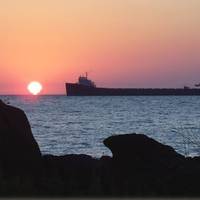
Foreign steel, vessel repairs and a broken lock combine to cut U.S.-flag Great Lakes float 10 percent in August, according to the Lake Carriers’ Association (LCA). Continued high levels of steel imports, coupled with three large vessels idled for repairs and a lengthy closure of the MacArthur Lock at Sault Ste. Marie, Michigan, cost U.S.-flag Great Lakes fleets more than 1.1 million tons of cargo in August, the LCA said. The fleet moved 9.9 million tons of raw materials in August, a decrease of 10.3 percent compared to the 11 million tons hauled a year ago.
Great Lakes Ore Trade Dips in August
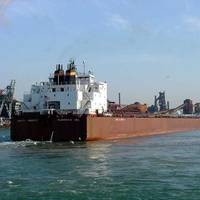
Shipments of iron ore on the Great Lakes and St. Lawrence Seaway totaled 5.9 million tons in August, a decrease of 19 percent compared to a year ago, according to the Lake Carriers’ Association (LCA). LCA said the ore trade was suppressed by continued high steel imports levels, as well as three of the largest U.S.-flag lakers out of service for repair work for the majority of the month. Shipments from U.S. ports decreased 26.5 percent compared to a year ago, down to a total 5 million tons…
US-flag Iron Ore Cargos Retreat Again in July
With the nation awash in dumped foreign steel, iron ore cargos carried by U.S.-flag Great Lakes freighters (lakers) fell again in July, according to the Lake Carriers’ Association (LCA). Loadings totaled 4.7 million tons, a decrease of 10 percent compared to a year ago. The slump comes on the heels of a 10 percent decrease in June. Total cargo movement in U.S. hulls totaled 10.9 million tons in July, a decrease of 4 percent compared to a year ago. U.S.-flag lakers’ coal float increased 6.4 percent in July, but shipments of limestone dipped by 5.6 percent. The stone trade is also feeling the impacts of unfair trade in steel, LCA said. Steel production is the primary driver behind demand for fluxstone and metallurgical stone. The failure of the MacArthur Lock at Sault Ste.
Steel Imports Take Toll on Lakes Ore in July
Shipments of iron ore on the Great Lakes and St. Lawrence Seaway totaled 6.6 million tons in July, a decrease of 9 percent compared to a year ago, the Lake Carriers’ Association (LCA) reported. The decline reflects that steel imports continue to command more than 30 percent of the U.S. market, according to the LCA, who added it takes approximately 1.5 tons of iron ore (and roughly 400 pounds of fluxstone) to make a ton of steel in a blast furnace, so every ton of unfairly traded steel takes cargo off the lakes. Shipments from U.S. ports totaled 5.7 million tons, a decrease of 14 percent compared to a year ago. Only one port, Cleveland, Ohio, saw its loadings outpace last July.
Foreign Steel Cuts Lakers’ Ore Float in June
With foreign steel now commanding nearly 32 percent of the U.S. market, it was inevitable that iron ore cargos hauled in U.S.-flag Great Lakes freighters (lakers) would take a hit, and that hit came in June, the Lake Carriers’ Association (LCA) reported. Cargos totaled 4.4 million tons, a decrease of 17 percent compared to May and 10 percent compared to a year ago. “Although not unexpected, the slowdown in iron ore is troubling,” said LCA president James H.I. Weakley. “On average it takes about 1.5 tons of iron ore to make a ton of steel, so foreign steel that is dumped into the U.S. market takes ore and other cargos off the Lakes. It is imperative that the government enforce our trade laws…
LCA Sees Progress on Great Lakes Issues
Prospects for ending the dredging crisis and resolving other pressing issues on the Great Lakes are the best in 12 years according to Lake Carriers’ Association (LCA), the trade association representing U.S.-flag vessel operators on the inland seas, in its State of the Lakes report issued today. Only uniform, Federal regulation of ballast water remains elusive, particularly since Canada has yet to issue its ballast water regulations. According to LCA, the greatest progress has been made on the dredging crisis. Just a few years ago more than 18 million cubic yards of sediment clogged ports and waterways and the backlog was projected to grow. Now, the backlog is down to approximately 17 million cubic yards and shrinking.
Fleet Pays High Price for Thick Lakes Ice

Cargo movement in U.S.-flag Great Lakes freighters (lakers) in March fell to its lowest level since 2009., the Lake Carriers’ Association (LCA) reported. Shipments totaled only 825,000 tons, a decrease of more than 60 percent compared to the month’s five-year average. Another brutal winter, coupled with a number of casualties to U.S. and Canadian icebreakers, slowed the resumption of navigation. A number of vessels delayed their fit-out because of the heavy ice. Only 26 U.S.-flag lakers were in service on April 1. In some years, nearly 50 hulls are underway by that date.
April Ice Weighs on US-flag Lakes Cargo
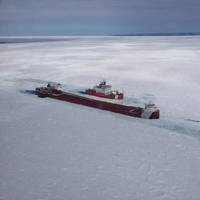
U.S.-flag Great Lakes freighters (lakers) moved 6.7 million tons of dry-bulk cargo on the Great Lakes in April, a decrease of nearly 6 percent when compared to the month’s 5-year average. Another brutal winter again spawned heavy ice formations Lakeswide that slowed the vessels that were put into service and delayed others’ sail date. With five of the six U.S. iron ore loading ports on Lake Superior, it follows that the iron ore trade was most affected by the ice fields. Shipments totaled 3.4 million tons, a decrease of 10 percent compared to the month’s 5-year average.
Best May for U.S.-Flag Lakers in 7 Years

U.S.-flag Great Lakes freighters (lakers) moved 10.8 million tons of dry-bulk cargo in May, their highest total for that month since 2008. The surge is at least partially attributable to the fact that no ice delays were experienced this May. Comparisons with May 2014 illustrate how ice slowed shipping a year ago. Iron ore cargos were up more than 17 percent, but that increase somewhat reflects that in May 2014 three 1,000-foot long lakers were collectively out of service to repair ice damage for 65 days.
Great Lakes: US Cargoes Surge on Milder Weather
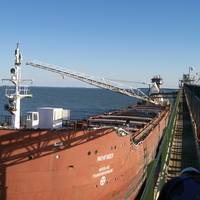
With the vast ice fields of December 2013 a distant but still troubling memory, U.S.-flag cargo movement on the Great Lakes this past December rebounded significantly. Shipments totaled 9.6 million tons, an increase of nearly 35 percent compared to a year ago. Every commodity – iron ore, coal, limestone, cement, salt, sand and grain, registered increases ranging from 10 to 209 percent. “The increases recorded this past December dramatically illustrate just how badly the early onset of ice in December 2013 slowed Great Lakes shipping,” said James H.I.
Great Lakes: Less Ice Sees Ore Ships Thrive

A relatively mild December on the Great Lakes allowed iron ore shipments to increase dramatically compared to a year ago when an early arriving winter blanketed the system with thick ice, the Lake Carriers’ Association (LCA) reported. Shipments totaled 6.3 million tons, an increase of 23.6 percent compared to a year ago, LCA said, noting that the biggest increase came from U.S. ports on Lake Superior. Meanwhile, loadings out of Duluth, Minnesota, Superior, Wisconsin, Two Harbors and Silver Bay…





